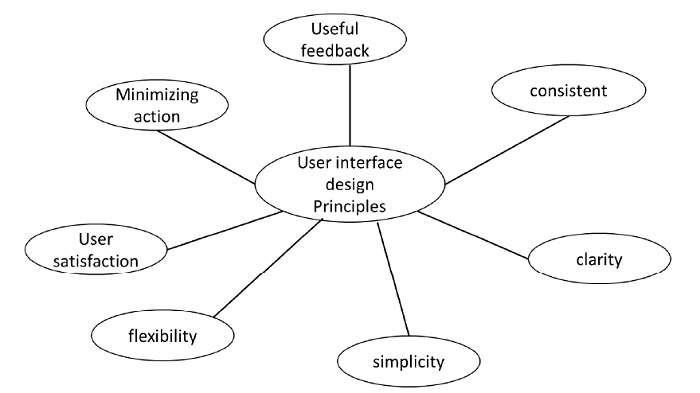
 Data Structure
Data Structure Networking
Networking RDBMS
RDBMS Operating System
Operating System Java
Java MS Excel
MS Excel iOS
iOS HTML
HTML CSS
CSS Android
Android Python
Python C Programming
C Programming C++
C++ C#
C# MongoDB
MongoDB MySQL
MySQL Javascript
Javascript PHP
PHP
- Selected Reading
- UPSC IAS Exams Notes
- Developer's Best Practices
- Questions and Answers
- Effective Resume Writing
- HR Interview Questions
- Computer Glossary
- Who is Who
What are the principles of user-interface design?
User Interface Design is the design of the interface or system which is directly accessible by the user and they interact with in order to do a task. It establishes the way with which the user will interact with the product.
Its main aim is to enhance the appearance of the product, the quality of technology used and the usability of the product. It refers to the software or the hardware of the system which the user can see and also the various ways or commands to control or use the product.
It focuses on the looks or how the app or software is looking. Attributes like theme, animations, colors, etc constitute the user interface.
Principles of User Interface Design
Now let us discuss about the principles of user-interface design which are as follows −
Minimize actions − Minimize action means steps per screen. The tasks and actions are streamlined so that they can be done in as few steps as possible. The interface should be designed keeping in mind to maintain the steps as few as possible for performing any tasks.
Simplicity − The user interface should not be complex. It should always be designed simple and elegant.
Consistent − The user interface should be consistent. The design should be consistent. Increasing consistency increases the familiarity, and hence increases the usability.
Proving useful feedback − The user should be provided with feedback for every action. This keeps the user informed and helps them to know whether some action was successful or not.
Clarity − Content should provide the user with clarity. There should not be anything which confuses the user, as it becomes an obstacle for the user in interacting with the product.


